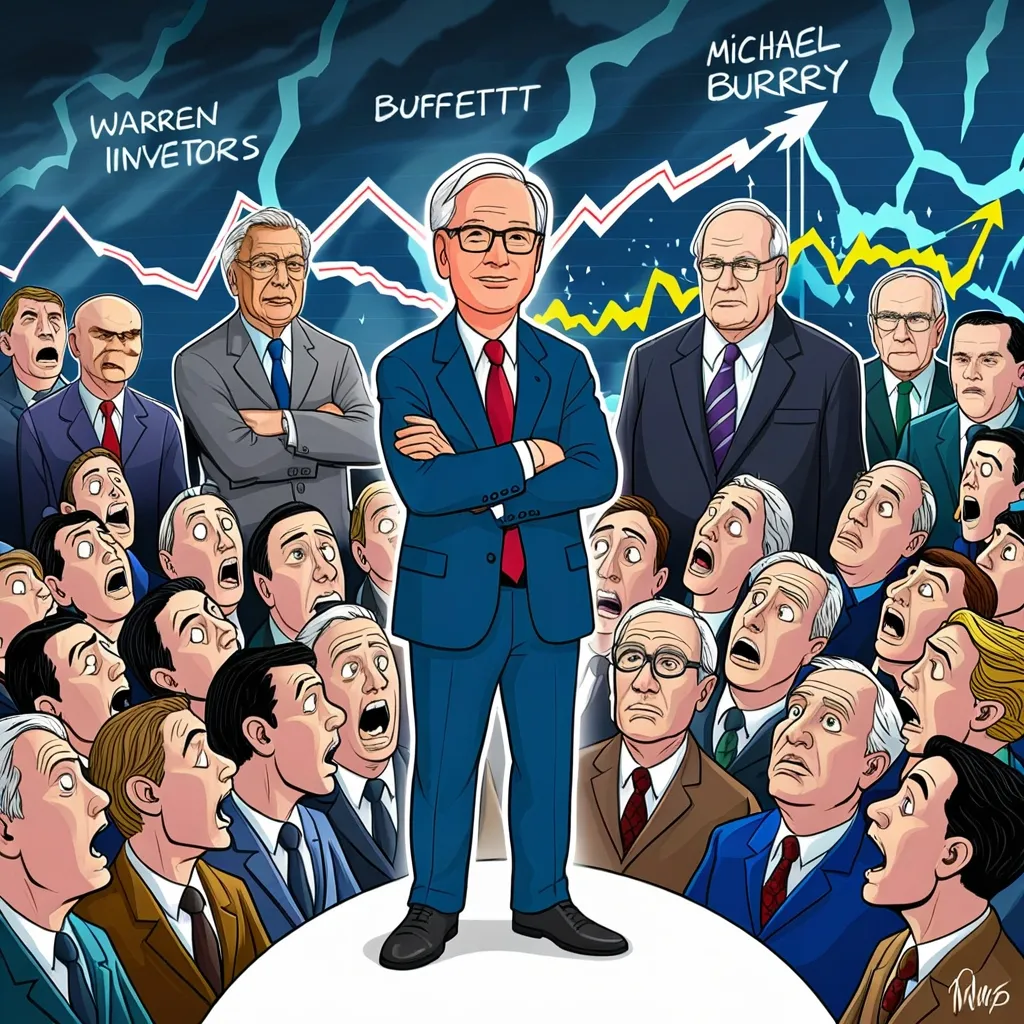Investing is a journey, and for many, it starts with following the crowd. The stock market buzz can often lead investors to chase hot trends or flee from those that seem to have lost their sparkle. Yet, there’s a bolder and often more rewarding path that some investment legends have mastered: contrarian investing. Instead of going with the market flow, this approach thrives on doing the exact opposite, strategically making moves when others are paralyzed by fear or emotional highs.
A contrarian investor essentially thinks differently. The mindset relies on viewing market trends with a healthy dose of skepticism. In a world where fear and greed often dictate decisions, these investors choose caution when the market is soaring with optimism and see opportunities when the market plunges into despair. Perhaps no one captures this spirit better than Warren Buffett, who famously advises, “Be fearful when others are greedy, and greedy when others are fearful.” But embracing this mindset means standing firm on logic amidst emotional chaos and requires serious patience. It’s about having the courage to be among the few, while most follow the herd.
The contrarian game plan is straightforward yet requires deep market insights. It’s about identifying undervalued stocks that the broader market has momentarily deemed undesirable. When gloom hovers over the markets and fear is in the air, contrarians sniff out opportunities hidden beneath. A classic example of this philosophy in action came during the 2008 financial crisis. As panic led many to sell off investments in a rapid race to cut losses, Warren Buffett took to buying. His strategic investments in firms like Goldman Sachs didn’t just weather the storm; they thrived, proving his approach’s efficacy when the markets eventually rebounded.
Warren Buffett may be the poster boy, but contrarian success stories aren’t his alone. Michael Burry, a former neurologist who ventured into hedge fund management, also reaped huge rewards by betting against the booming subprime mortgage market in 2005. Predicting the housing bubble’s burst, he stood strong and cashed in massively when things fell apart. And let’s not forget Sir John Templeton. Amid World War II, he put his money where everyone else was afraid, buying cheap stocks across Europe. His wager paid off, bringing in substantial profits as the world economy bounced back.
But here’s the kicker: contrarian investing isn’t a walk in the park. The pursuit of undervalued gems demands extensive research and a keen eye for financial fundamentals. It involves peeling back the layers of companies and sectors, often dedicating significant time to unearth potential others have missed. Plus, it requires supreme patience. You might have to wait for what feels like eons before the market realizes the value you saw all along. In the meantime, there might be rocky patches—holding on tight through volatility is non-negotiable.
For those peering into the contrarian way, a few good tips might light the path. Firstly, watch where the money flows, or rather, where it flows out. Market sectors experiencing outflows often hold unlock potential. Employ good ol’ valuation metrics to spot under-the-radar stocks—diving into the price-to-earnings or price-to-book ratios can help recognize bargains. Remember, patience is more than a virtue here—it’s the strategy’s backbone. While betting against the crowd, diversifying remains wise, steering clear of putting all eggs in one metaphorical basket. Staying sharp and informed about market sentiments allows a contrarian to pivot adeptly.
Real-life instances make the strategy tangible. Take, for example, a scenario involving Epam Systems (EPAM), a company providing digital transformation services. Stricken by the Ukraine conflict, its stock took a hit despite robust fundamentals. For contrarian investors, this setback wasn’t a red flag; it was a golden opportunity. With faith in its strategic acquisitions and long-term potential, jumping in when others hesitated opened doors for future gains once the market tide turned positive.
Contrarian investing is as much about psychology as numerics. This approach demands a knack for sensing when market emotions push valuations too far in any direction. When exuberance is sky-high, it often precedes a peak; similarly, total despair might predict recovery. Thus, patience with one’s contrarian beliefs is crucial, avoiding the crowded and potentially unwise spaces and opting for value with foresight.
History books are dotted with successful contrarian feats. The crash of 1987, known as “Black Monday,” is one such example. A single-day monstrosity where the Dow plummeted by 22%, causing extreme panic. Yet, contrarians saw the dust settle as a bargain-hunting spree that later paid off. Sir John Templeton’s wartime investments reinforce this strategy’s timeless nature. Amidst chaos, buying low bore fruits once global stability returned.
Treading the contrarian path requires boldness and reliance on one’s judgments. Investing during pessimistic times or avoiding the euphoric highs isn’t easily stomached. But those who embrace this approach can carve out significant returns, capitalizing on the market’s inefficiencies. While most of the investing world sticks to its playground governed by cheerily agreed consensuses, contrarians occupy a rarer field. By spotting what others overlook, they frequently end up on the winning side.
So, next time the market moves are predictable, think twice. When everyone buys into a sizzling trend or panics out of it, perhaps it’s worth considering the road less traveled—the contrarian choice. It might be the portal to considerable gains over time, precisely because not following the crowd can be, surprisingly, your biggest edge.






